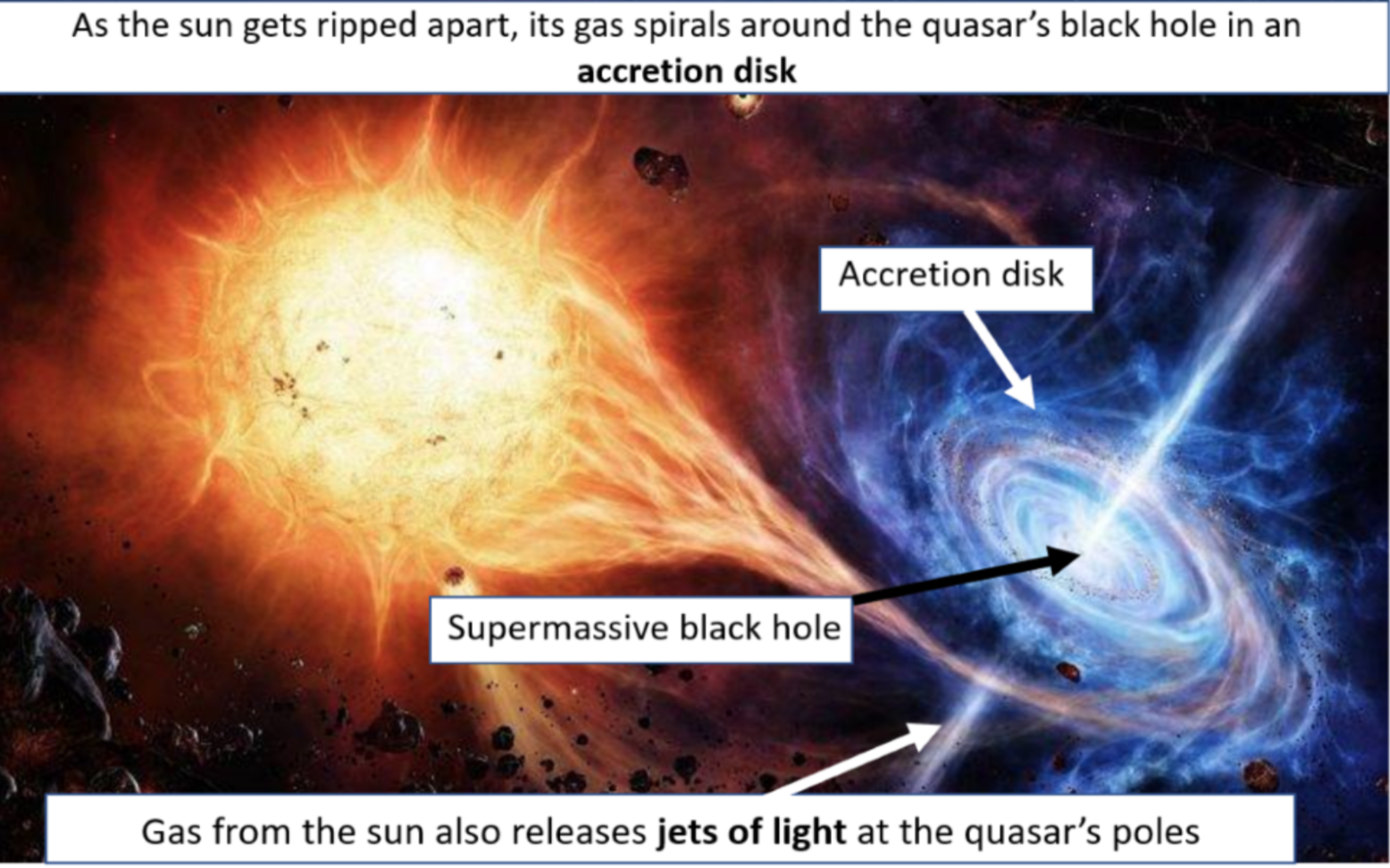Our Bizarre Universe part 1: Quasars
Quasars. Not only do they sound like something out of science fiction, but these galactic beasts are truly some of the coolest things in our known universe. Rightly so, as they have it all: suns that get ripped apart into giant gas clouds and spiral around a supermassive black hole, brightness thousands of times greater than our own milky way, and epic jets of light and energy that seem to shoot out of the quasar’s poles. So, let's dive into these fascinating space giants (but not really, because nothing, not even light, can escape them!)
Quasars can be broken down into two parts: a supermassive black hole and ripped apart suns which spiral around it. In the center of the quasar sits a supermassive black hole, which, as the name suggests, is a very big black hole. These types of black holes can be up to thousands of light years wide (one light year is 5.88 trillion miles!) and can be up to tens of billions of times denser than our sun. And the cool thing is, each galaxy has their own supermassive black hole, including ours’, the Milky Way. But not every galaxy has a quasar, and sadly our own Milky Way, does not. For a galaxy to have a quasar, its supermassive black needs to eat at least ten suns a year and shine extremely brightly. That’s where the second part, the spiraling ripped apart suns, come in. Because black holes are so massive, they generate a lot of gravity. This allows them to suck a lot of things in, but only if these things get close enough. Suns, which are the main food of black holes, have to cross an invisible line called the event horizon to get sucked in. After that, there’s no return, not even for light, the fastest moving thing in the universe. What’s cool is that when a sun gets sucked in by a quasar’s black hole, it doesn’t just fall in whole, like a ball rolling into a pit. Instead, the sun gets ripped apart and its gas layers peel off like if you peeled the skin of an apple. As this gas gets sucked into the black hole, it spirals around it, similar to a boat in whirlpool. And when this happens, the gas heats up so much that it glows, releasing an enormous amount of light. Called an accretion disk, this glowing gas is responsible for the extreme brightness of quasars. In addition, the gas being sucked into a quasar’s black hole can also release jets of energy that shoot out from its north and south poles. Shining thousands of times brighter than the galaxies they sit in, quasars are the brightest things that we can observe in our universe. The first quasar discovered, quasar 3C 273, is 4 trillion times brighter than our sun!
So, to sum up, quasars are supermassive black holes that consume a lot of suns and shine extremely brightly. They attract astronomers not just because of their marvelous features, but because they can help them to understand how the universe worked billions of years ago. This is because most quasars are billions of light years away, so when we look at them, we see how they were in the past. With this valuable information, astronomers can observe the properties of the universe as it was billions of years ago.

